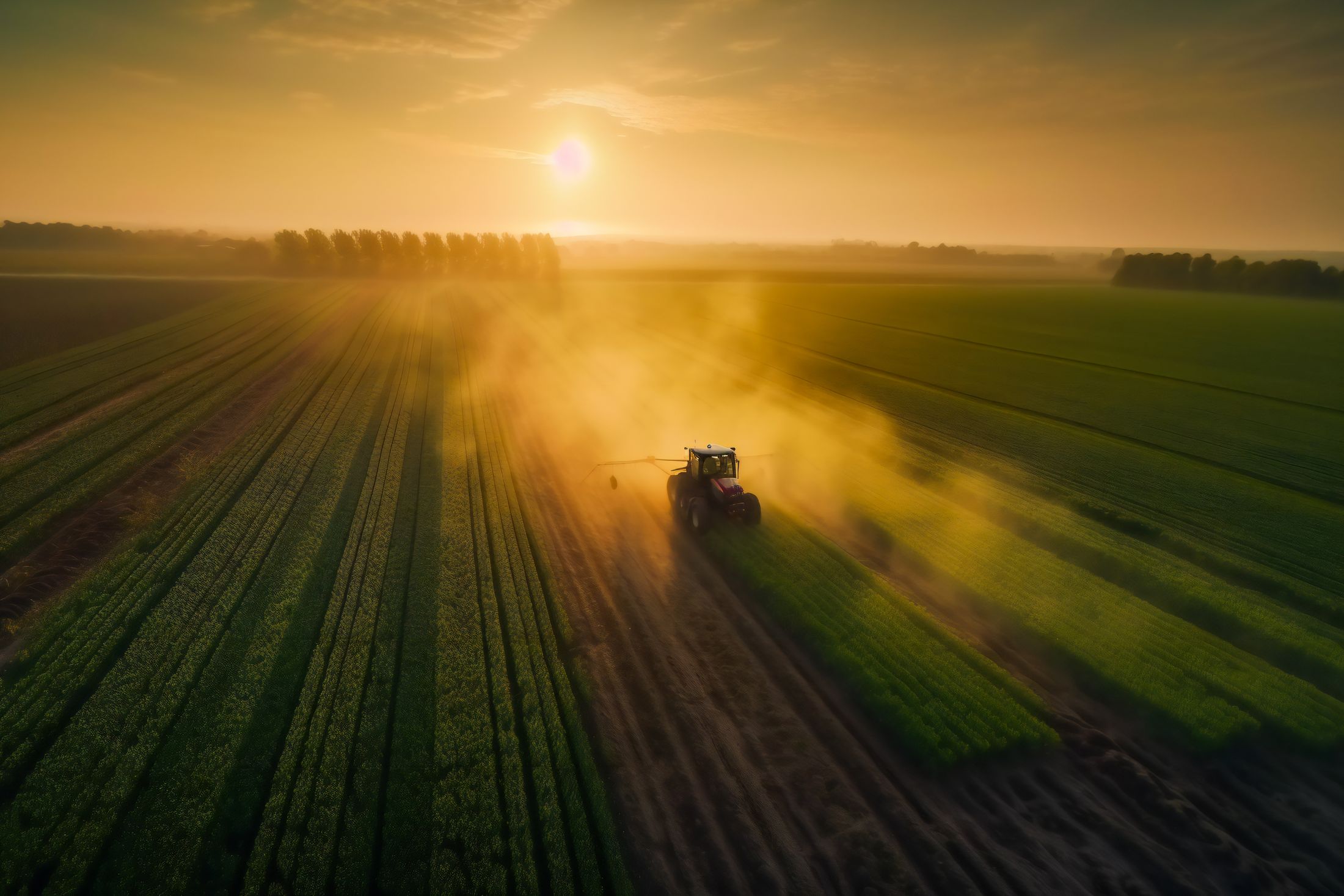For more than 140 years, farmers in the United States have been purchasing insurance policies to help protect their hard work against changing markets and unpredictable weather. Updates have been made over time — like introducing a federally backed program to help farmers recover from the combined effects of the Great Depression and the Dust Bowl. Take a look back through the years below.
In the 1880s, a group of tobacco farmers in Connecticut formed the first organized crop insurance company, offering protection against losses from hail. Hail coverage was offered by private companies for the next 50 years.
In 1935, the dust storms began. After a year of record-breaking heat, the dusty soil from plowed fields drifted and piled up like snowdrifts, except it didn’t melt in the spring. Instead, crops and cattle died. On Feb 19, 1937, the Federal government announced the first national crop insurance program to help agriculture recover from the combined effects of the Great Depression and the Dust Bowl.
In 1938, the Federal Crop Insurance Corporation (FCIC) was created to carry out the program. Initially, the program was started as an experiment. Crop insurance activities were limited to major crops in the main producing areas. Crop insurance remained an experiment due to high costs and low participation rates among farmers for the next 42 years until the passage of the Federal Crop Insurance ACT of 1980.
Up to this point, crop insurance was strictly a government program. In the 1980s, private insurance companies became involved and, by 1998, had become the sole providers of crop insurance to the American farmer.
Although the number of insurable crops or commodities grew with the passage of the 1980 Act, it did not achieve the level of participation that Congress had hoped for. After a major drought in 1988, “ad hoc disaster assistance” (unplanned assistance created specifically for this event) was authorized to provide relief to eligible farmers. Another ad hoc disaster bill was passed in 1989, a third in 1992, and a fourth in 1993. Congress grew tired of these repeated requests.
By the early 1990s, crop insurance participation rates were still low, and Congress was spending more money in disaster relief than it was on crop insurance. This led to the enactment of the Federal Crop Insurance Reform Act of 1994 which dramatically restructured the program. This Reform act made participation in the crop insurance program mandatory for farmers to be eligible for deficiency payments under price support programs, certain loans, and other benefits. Because participation was mandatory, catastrophic (CAT) coverage was created.
CAT coverage compensated farmers for losses exceeding 50 percent of an average yield paid at 60 percent of the price established for the crop for that year. The premium for CAT coverage was completely subsidized by the Federal government. Participants paid $50 per crop per county subject to maximum amounts for multiple crops and counties insured by the same individual. Subsidies for higher coverage levels were increased.
In 1996, Congress repealed the mandatory participation requirement. However, farmers who accepted other benefits were required to purchase crop insurance or otherwise waive eligibility for any disaster benefits that might be made available for the crop year. These provisions are still in effect.
In the same year, the Risk Management Agency (RMA) was created in the United States Department of Agriculture to administer the Federal Crop Insurance programs and other non-insurance-related risk management and education programs that help support U.S. agriculture. Through subsidies built into new guidelines, participation grew.
By 1998, more than 180 million acres of farmland were insured under the program, representing a three-fold increase over 1988.
In 2000, the Agriculture Risk Protection Act (ARPA) allowed Congress to enact legislation that expanded the role of the private sector, allowing entities to participate in conducting research and development of new insurance products and features. With the expansion of the contracting and partnering authority, RMA can enter into contracts or create partnerships for research and development of new and innovative insurance products.
Authority was added to allow the Board of Directors to create an expert review panel to aid the board in evaluating new insurance products for feasibility and actuarial soundness. ARPA also increased premium subsidy levels to farmers to encourage greater participation and included provisions designed to reduce fraud, waste and abuse.
In 2008, more than 272 million acres were insured and by 2013, crop insurance protected more than 294 million acres. This was equal to 89% of planted cropland, including protecting 128 different crops with an insured value of $124 billion!
In 2014, The Farm Bill substantially strengthened crop insurance by adding several new products and options for farmers and ranchers and by making crop insurance more affordable for beginning farmers with a new provision called Beginning Farmer and Rancher (BFR) Benefits.
The Farm Bill required a number of program revisions to reinforce crop insurance’s role as the primary component of the farm safety net. The major enhancement to crop insurance was the addition of two supplemental policies. The Supplemental Coverage Option (SCO) and the Stacked Income Protection Plan (STAX)) which help producers expand their protection against losses due to natural disasters or price declines. Another major addition was the Whole Farm Revenue Protection (WFRP) policy which provides coverage for highly diversified farms and farms selling two to five commodities to wholesale markets.
The Farm Bill provides for increased program integrity, guaranteeing tax dollars are used effectively and efficiently as we expand the farm safety net.
Today, the Federal Government’s role in the crop insurance industry is to establish policy provisions, rules, and regulations. Depending on the level of coverage, the government subsidizes from 38% to 67% of the producer’s premium and provides reinsurance to ProAg and other Approved Insurance Providers (AIPs). The government also provides administrative and operating (A&O) reimbursement to these companies.

